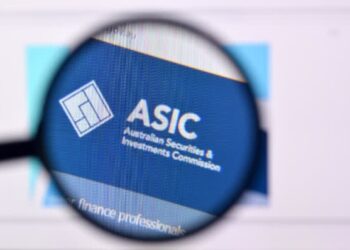Earlier this month, ASIC released Information Sheet 274 Tips for giving self-managed superannuation fund advice (INFO 274) which consolidated and replaced two previous information sheets, INFO 205 and INFO 206.
The new information sheet removes the minimum balance threshold of $500,000 which was in the previous guidance and outlines that balance is only one of several indicators of suitability.
BT national manager, SMSF strategy, Neil Sparks said INFO 274 is a positive step for the SMSF community as it removes confusion about whether financial advisers can recommend the establishment of a new SMSF to clients with less than $500,000 in their super.
Mr Sparks outlined some important tips for SMSF advisers stemming from INFO 274, within the context of the broader regulatory framework for SMSF advice.
Case studies provide a guide on where an SMSF may be suitable
An attachment to Information Sheet 274 provides case studies on the circumstances where an SMSF may be suitable for clients, even where the client has a lower starting balance.
Mr Sparks explained that there may be circumstances when an SMSF with a lower starting balance is consistent with the client’s best interests.
“For example, if the trustee is willing and able to undertake some of the administration and management of investments, this may make a low balance fund more cost-effective or if a large contribution is planned to be made into the SMSF within a short time frame of the fund being set up,” he said.
“Alternatively, there may be circumstances when an SMSF with a higher starting balance is not in a client’s best interests because it does not meet their objectives, financial situation or needs.”
INFO 274 contains helpful case studies to illustrate that an SMSF balance is only one factor a financial adviser should consider when determining whether an SMSF is suitable for their client.
Advisers must inform potential trustees/members of the costs and responsibilities of running an SMSF
The new guidance states that when completing a cost analysis between a new SMSF and an existing fund, it is important that advisers clearly set out the costs of setting up, operating and winding up an SMSF, identifying both unavoidable costs and optional costs at each stage, said Mr Sparks.
“Although an SMSF trustee may outsource their SMSF responsibilities to professional advisers, the trustee is solely responsible for compliance with the fund’s trust deed, as well as superannuation, corporations and taxation laws.
“Advisers should ensure the trustees understand and accept that they retain ultimate responsibility for the SMSF’s compliance obligations.”
Mr Sparks said advisers also need to identify whether the client has the time, skills, commitment and experience to meet their trustee responsibilities.
“It would be beneficial to consider ASIC’s red flag guidance in 19-277MR where it refers to ‘red flag’ indicators identified in Report 575 that suggest when an SMSF may not be appropriate,” he advised.
“Factors to consider include whether there are any signs of the trustee having low financial literacy, cognitive impairment, accessibility constraints or whether they are subject to coercion or elder abuse.”
Comparisons between SMSFs and APRA funds should be made
INFO 274 also makes it clear that advisers need to ensure their clients understand and accept the risks of an SMSF compared with an APRA-regulated super fund including the loss of potential benefits in moving to an SMSF.
“Importantly, an SMSF does not have the same protections as an APRA-regulated fund, and is not eligible for government compensation in the event of theft or fraud,” Mr Sparks noted.
“Furthermore, SMSF trustees and members do not have access to the Australian Financial Complaints Authority and may be required to resolve their own disputes.”
Some of the scenarios that advisers may want to run through with clients, he said, include the impact of a potential separation or divorce on the trustee-member relationship.
“Related to this, if members leave, the fund’s illiquid assets may need to be sold.”
Education about the fund’s investment strategy
Mr Sparks said that advisers should also ensure that clients understand the requirement and purpose of the SMSF’s investment strategy, which provides the basis for the SMSF’s investment decisions and how members intend to increase their retirement benefits.
“Among other things, advisers must be satisfied that their client understands the investment strategy must be reviewed regularly, and they must consider whether to hold insurance cover for members,” he explained.
Diversification can be misunderstood by clients, he warned, particularly those who may have a fixed view of the benefits of holding certain assets; for example, property.
“This is an opportunity for advisers to explain the risks, possible returns — or not — and liquidity of fund assets,” said Mr Sparks.
Explaining the differences between trustee structures
INFO 274 also highlights the need for advisers to discuss whether a corporate or individual trustee structure is suitable for their circumstances and the advantages and disadvantages of each one.
“Factors to consider include time, cost, compliance obligations, administration and reporting requirements, trustee succession planning and SMSF asset ownership considerations,” Mr Sparks explained.
While it may seem counterintuitive, Mr Sparks said advisers must also discuss an SMSF exit strategy at the time they are recommending the establishment of an SMSF.
“Trustees may need to wind up their SMSF for many reasons and it is best that they are aware of the method and potential costs involved if the fund or investments need to exit earlier than anticipated,” he explained.



